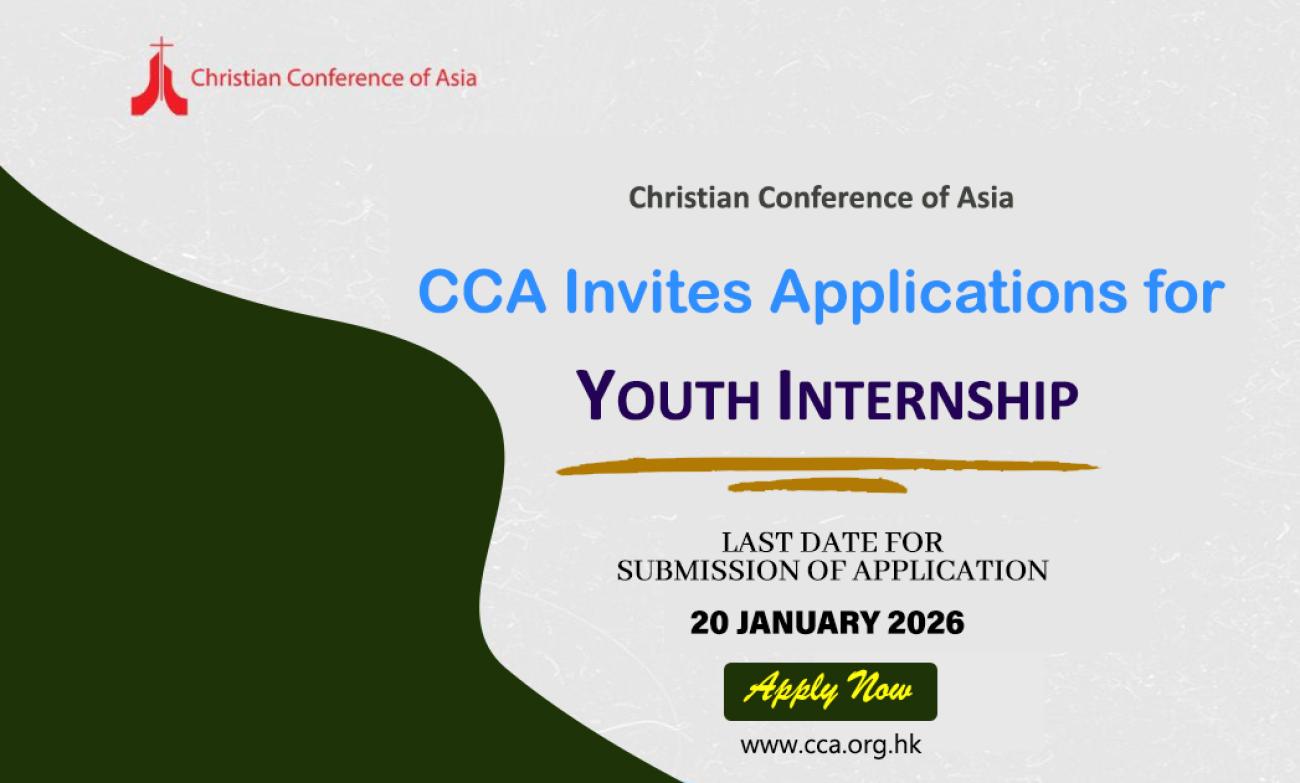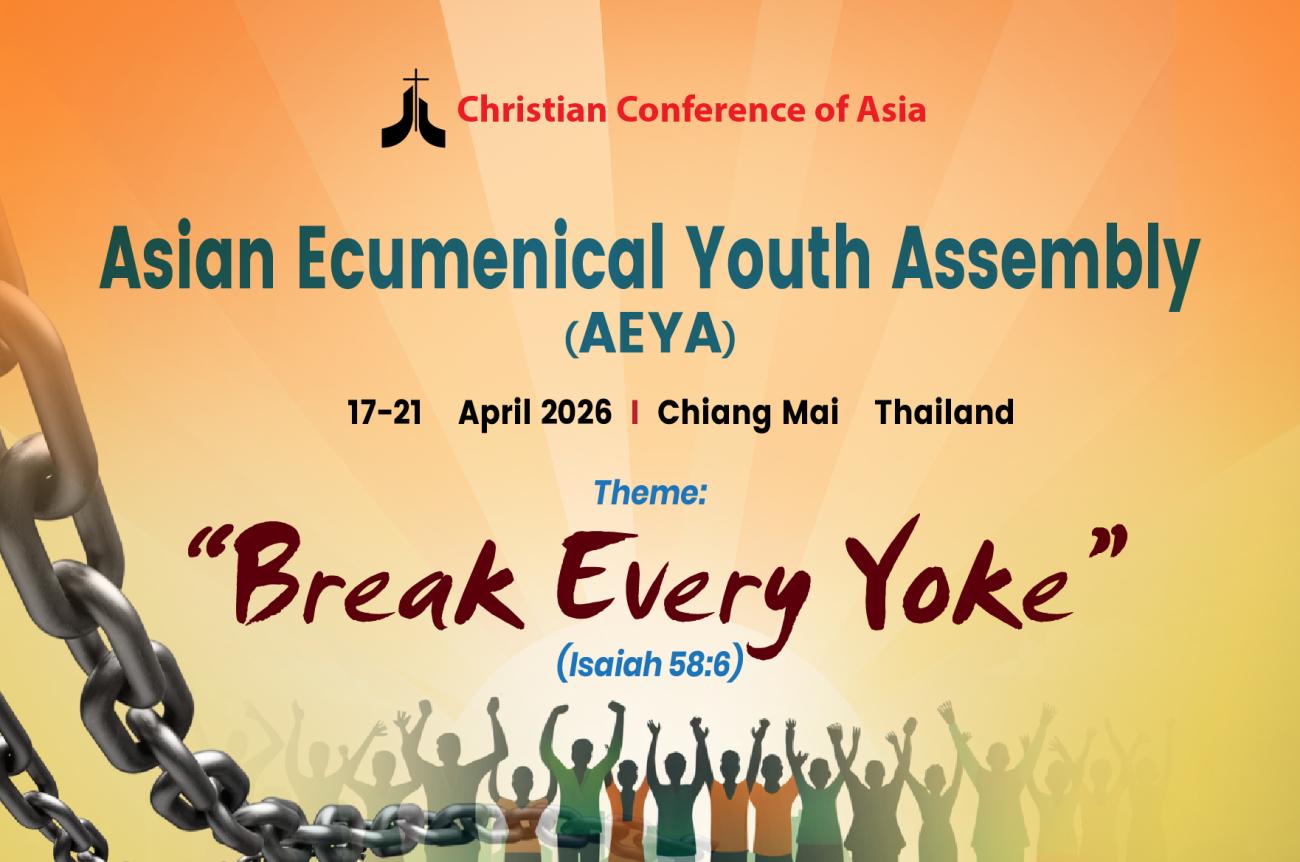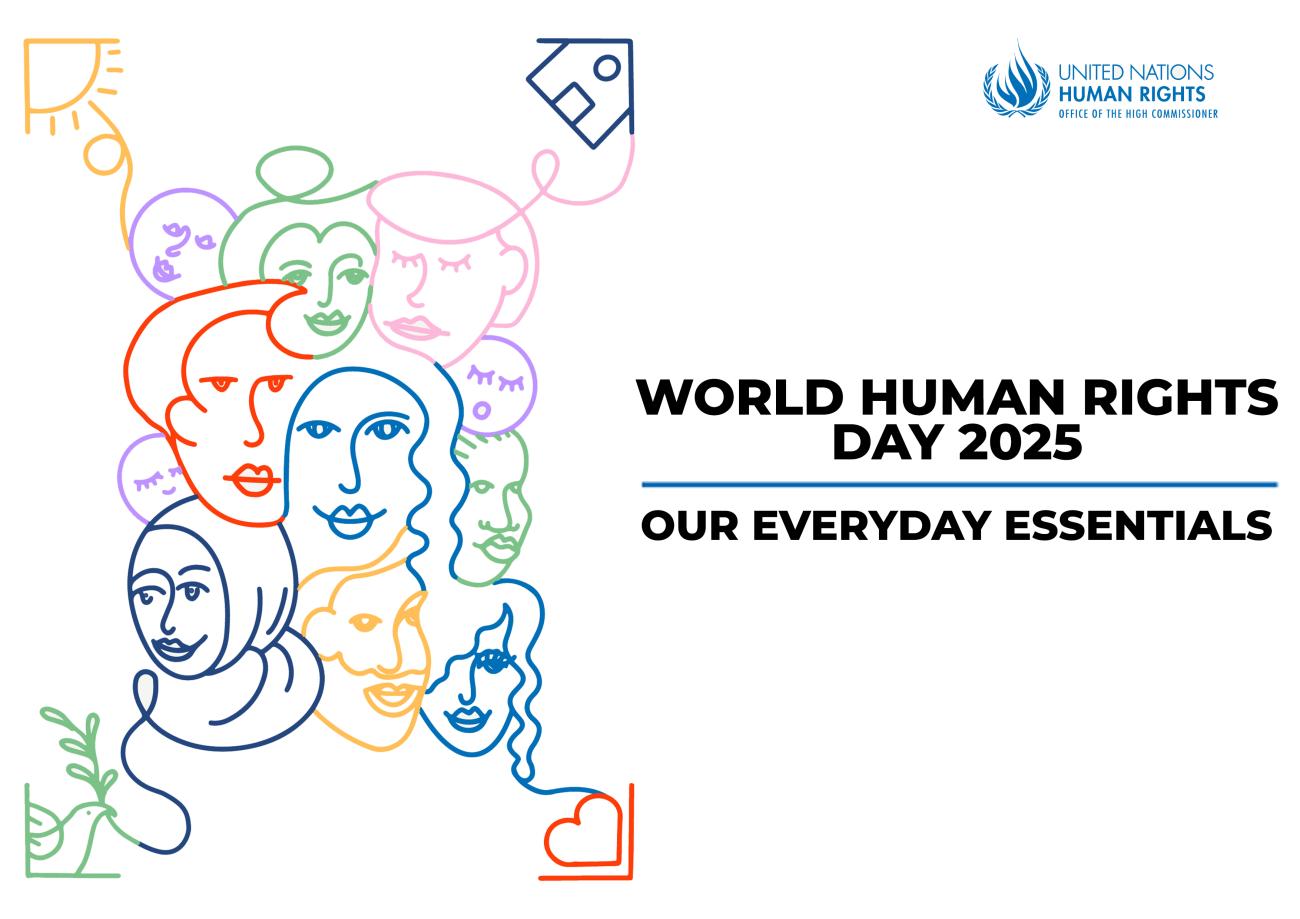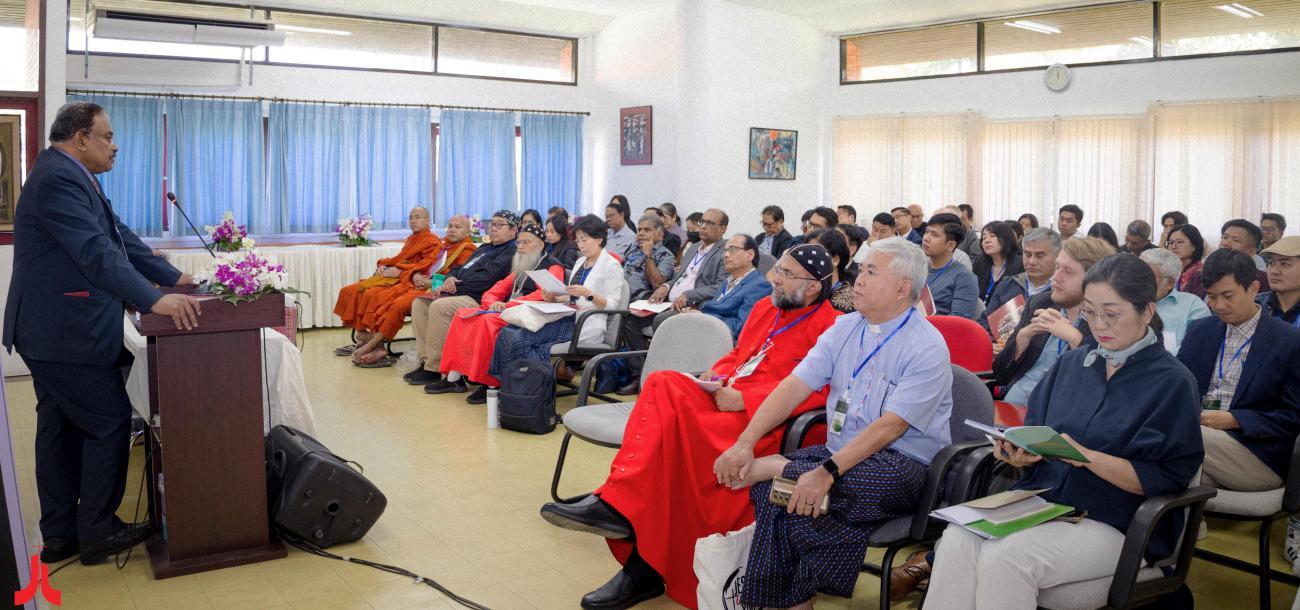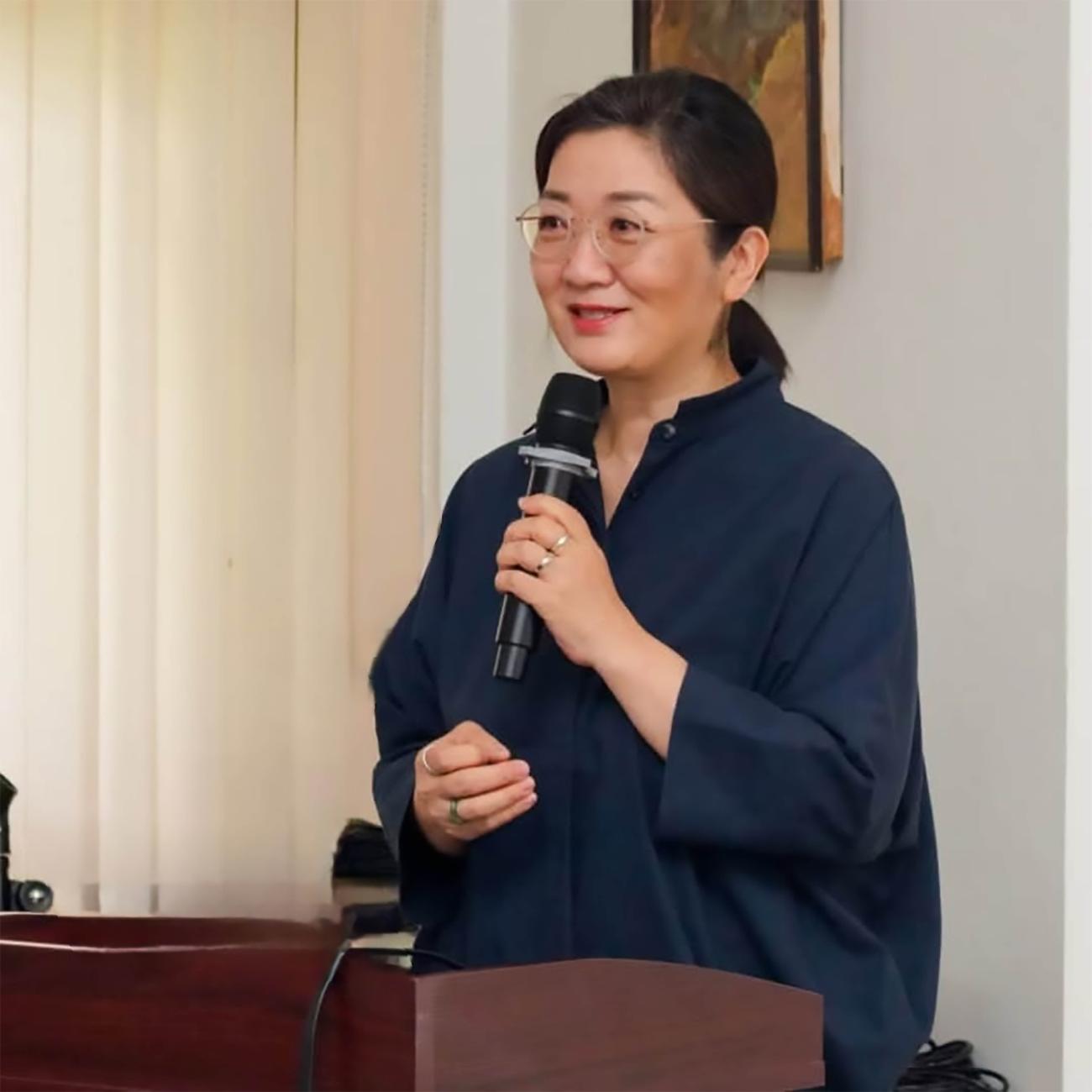Cambodia’s dark history and lessons learned in combating HIV and AIDS analysed at interfaith conference in Phnom Penh
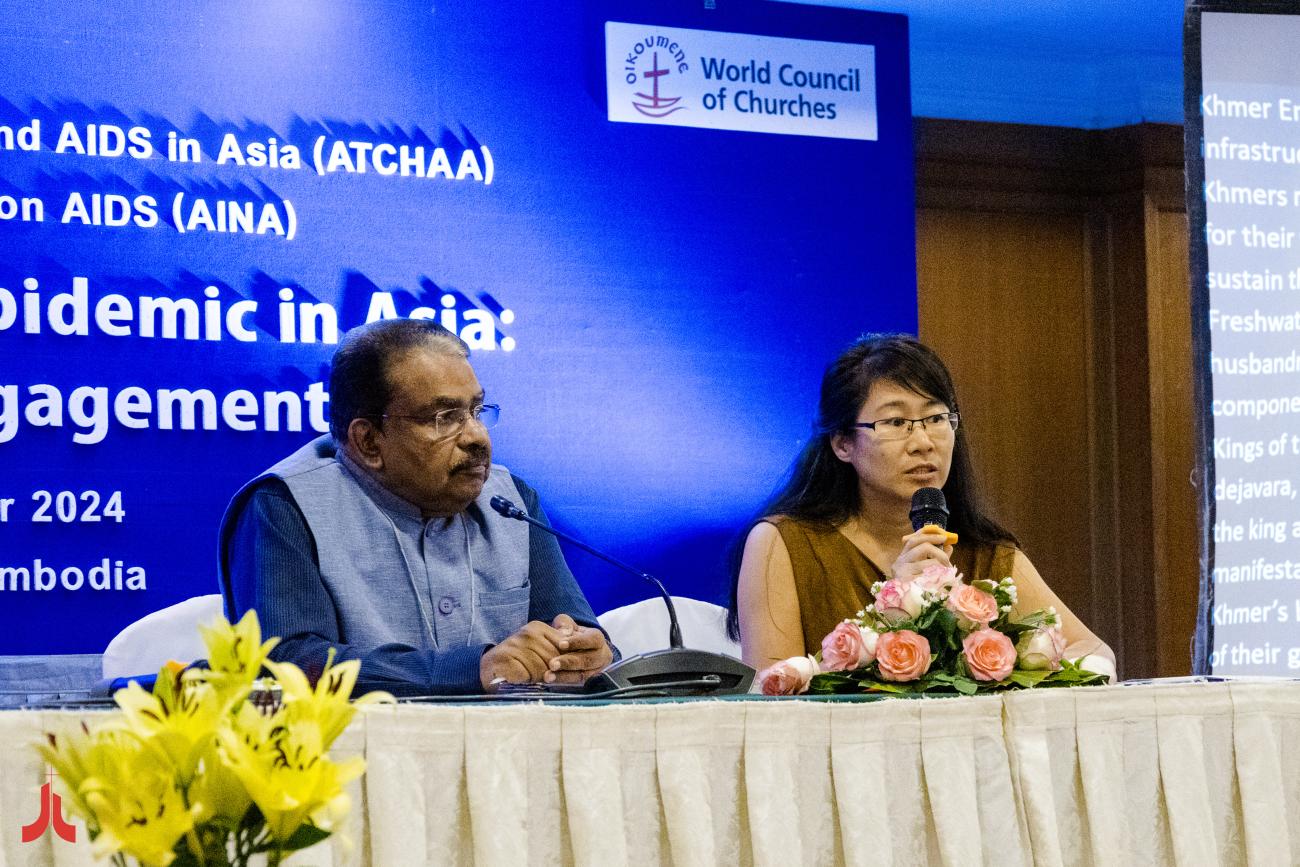
Dr Mathews George Chunakara and Sotheavy Srey during the special session on ‘Understanding Cambodian Realities: An Overview of Historical Perspectives’
Phnom Penh, Cambodia: The ongoing regional interfaith conference on ‘Reversing the HIV Epidemic in Asia: Faith-Based Engagements’, included a special session on ‘Understanding Cambodian Realities: An Overview of Historical Perspectives’, which offered participants a poignant opportunity to reflect on Cambodia’s dark history.
The three-day conference has brought together over eighty faith leaders and delegates from across Asia in Phnom Penh, Cambodia to focus on exploring faith-based strategies to address the HIV epidemic.
Sotheavy Srey, Executive Director of the Alliance for Conflict Transformation (ACT), and Dr Mathews George Chunakara, General Secretary of the Christian Conference of Asia (CCA), delved into Cambodia’s tumultuous history, including the civil war, the peace negotiations initiated through international mediation, and the subsequent election processes that paved the way for democratic governance in the post-civil war period.
During the session, the speakers highlighted Cambodia’s historical struggles, linking its tumultuous past to its battle against HIV and AIDS. They explained how the influx of foreign personnel during the 1990s transitional mission exacerbated the spread of HIV, which remained a significant issue for years before recovery efforts reduced prevalence rates.
Reflecting on the Khmer Rouge era, the speakers recounted the genocide under Pol Pot’s regime, during which over two million people were tortured and killed—a legacy that continues to cast a shadow over Cambodia despite ongoing economic development and rebuilding efforts.
Ms Sotheavy, whose work spans peacebuilding and ecumenical initiatives, offered a historical overview of Cambodia’s societal challenges. From its Neolithic roots near Tonle Sap Lake to the splendour of the Khmer Empire, Cambodia’s history reflects cultural richness and resilience. However, the empire's collapse, followed by colonial rule and the Khmer Rouge atrocities, ushered in decades of recovery and reform.
Dr Mathews George Chunakara observed that the early years of the HIV epidemic in Cambodia were marked by fear, as historical trauma compounded the public health crisis, creating widespread chaos. In the decade following the civil war, Cambodia began to feel the full impact of the epidemic, with widespread HIV and AIDS sparking significant fear across the nation. Massage parlours and nightclubs, frequented by foreign peacekeeping personnel, became hotspots for transmission. The presence of foreigners, combined with the vulnerabilities of a recovering society, is believed to have contributed to the spread of HIV, creating a major health crisis.
Despite this grim chapter, the Cambodian Policy to Eliminate AIDS introduced a range of measures, including increased national investments, enhanced community engagement, international cooperation to close prevention gaps, and improved access to social security and healthcare for vulnerable populations. As a result, Cambodia emerged as a model for combating HIV and AIDS which reduced infection rates significantly, Dr Chunakara added.
In line with the session’s theme, participants visited two harrowing sites on the second day—the Choeung Ek “Killing Field” and the Tuol Sleng Genocide Museum. These visits offered a visceral understanding of the Khmer Rouge’s atrocities, where millions of Cambodians were executed or died from torture, starvation, and forced labour.
The participants witnessed the chilling remnants of Cambodia’s darkest period, from mass graves to prison cells, underscoring the profound impact of history on the nation’s present-day challenges, including the spread of HIV and AIDS in the 1990s.
Through the session and field visits, faith leaders and delegates were not only educated on Cambodia’s history but also inspired to engage with the intersection of historical injustices, public health, and community resilience. The discussions highlighted how Cambodia’s tumultuous past intertwines with the challenges of the HIV epidemic and the country’s recovery efforts.

